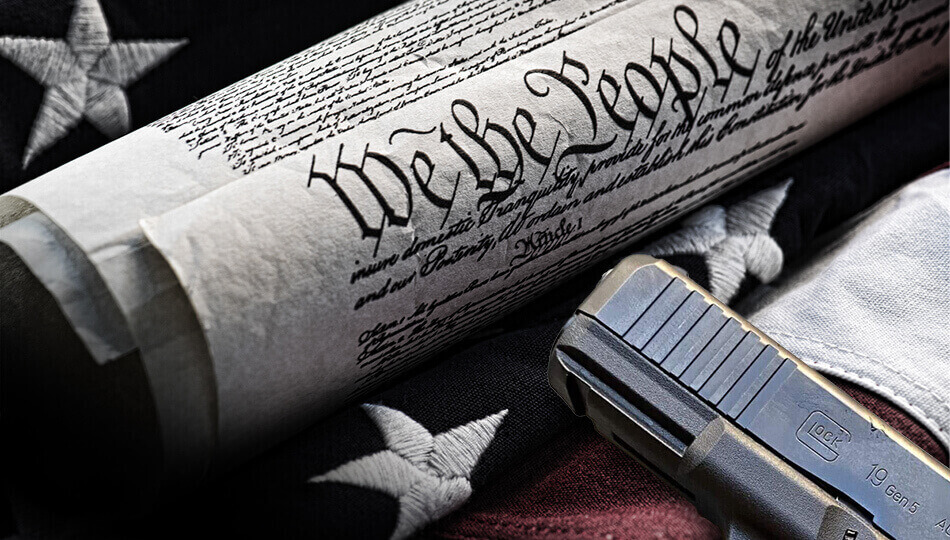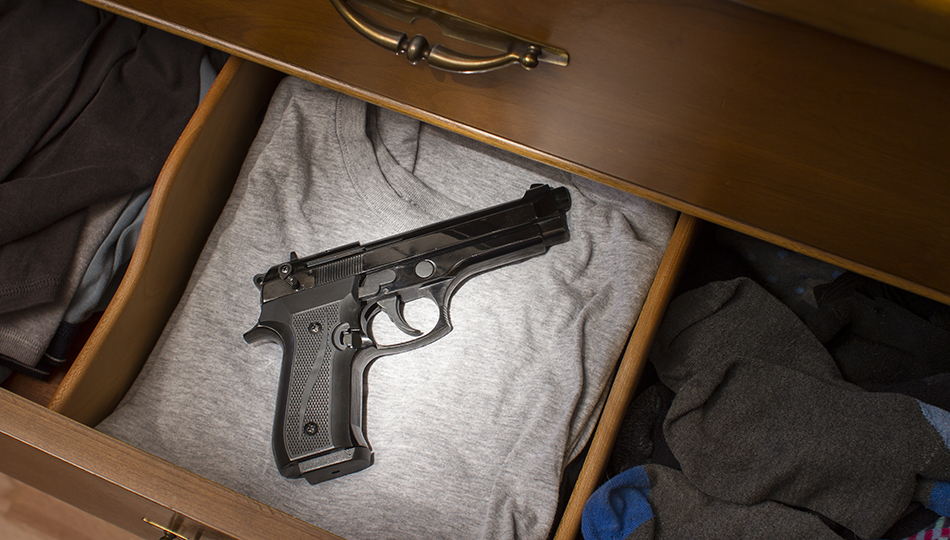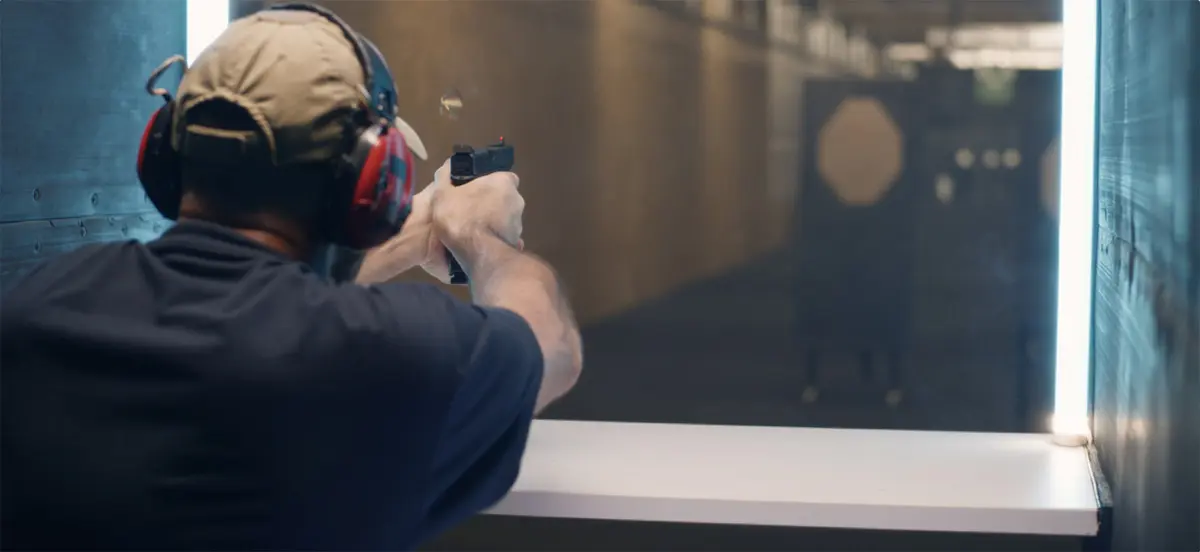
“A well regulated Militia, being necessary to the security of a free State, the right of the people to keep and bear Arms, shall not be infringed.”
The Second Amendment of the Constitution, or the right to keep and bear arms, is one of 10 amendments that make up the Bill of Rights. Different interpretations of the Second Amendment have caused a long-running and heated argument over gun rights in America. But how did we get here? What is the point of the Second Amendment?
Why Was the Second Amendment Created?
There are several factors that led to the creation of the Second Amendment. Many colonists believed the British government used its army to oppress the people. They believed militias, or groups of ordinary civilians, were strong enough to protect their communities instead. Unfortunately, these “part-time militias” couldn’t defend against the British Army during the Revolutionary War, making it clear the U.S. Constitution needed to provide a federal standing army. But many feared this would lead back to an oppressive government, so the idea behind the Second Amendment was born.
When Was the Second Amendment Written?
The Second Amendment and the Bill of Rights were added to the U.S. Constitution on December 15, 1791, during the First Congressional session. When America declared independence, the original 13 states each wrote their own constitutions. And each one included provisions intended to protect the people from government abuse. Because of this, many of the Founding Fathers didn’t think it was necessary to include these rights in a federal constitution—a document meant for enumerated powers (defined powers given to the federal government). In fact, James Madison believed that naming specific rights would imply that those were the only rights an individual had. But many refused to accept the drafted Constitution without the promise of a Bill of Rights, so these amendments were later written by Madison himself.
What are Second Amendment Rights?
The Second Amendment simply reinforces our right to keep and bear arms. Remember, the Founding Fathers wrote the Bill of Rights to restate our pre-existing rights, which is why it should not be changed. The Second Amendment protects our rights to:
- organize a militia;
- assist in law enforcement;
- defend against an oppressive government;
- guard against invasion; and
- act in self-defense.
Because of the Second Amendment, we can enjoy things like private security companies, protecting our families, and so much more. Also, these protections apply to more than guns! The Founding Fathers guaranteed our rights to self-defense, not merely gun-defense.
The Second Amendment Debate
The Second Amendment is often interpreted in different ways by different people. But what is the exact wording of the Second Amendment?
“A well regulated Militia, being necessary to the security of a free State, the right of the people to keep and bear Arms, shall not be infringed.”
There are two important parts to the Second Amendment:
- The Prefatory Clause: An introduction explaining why the right is necessary, and
- The Operative Clause: A statement of what the right is.
The prefatory clause of the Second Amendment explains that a well-regulated militia is necessary to the security of a free state, while the operative clause says the individual right to bear arms belongs to the people. For years, anti-gun activists have argued this right applies only to “militias” and not individuals. Luckily, the Supreme Court has decided otherwise.
What Is a Well-Regulated Militia?
The U.S. Supreme Court (“SCOTUS”) has clearly defined what the phrase “well regulated militia” does—and does not—mean. In United States v. Miller, 307 U.S. 174 (1939), SCOTUS defined a “militia” as a group consisting of “all males physically capable of acting in concert for the common defense.” The Court stated, based on how the amendment was drafted, that militias clearly existed before the idea of a standing army because they did not need to be created by Congress (unlike armies and navies).
So, how does the Court define “well regulated”? Exactly how it sounds: maintenance through discipline, training, and supplies. Isn’t this the National Guard? No. SCOTUS has considered and rejected the position that the National Guard is the current militia. In District of Columbia v. Heller, 554 U.S. 570 (2008), the Court stated a “well regulated militia” is not the state’s military forces, but a separate entity altogether. They also explained that “militia” refers to the body of the people, and they—the people—are essential to keeping a centralized government in check.
Do Individuals Have the Right to Keep and Bear Arms?
Yes, according to the Supreme Court. In fact, there are a few SCOTUS Second Amendment cases that relate to an individual’s right to firearm ownership. In these cases, the Supreme Court held:
- The Second Amendment protects an individual right to possess firearms for the purpose of self-defense, unrelated to military or militia activity.
- The Second Amendment is not unlimited or absolute. Reasonable restrictions on types of weapons and/or ownership are upheld.
- Second Amendment rights are protected at state and local level (through “selective incorporation” of the Fourteenth Amendment).
You can get an easy-to-understand breakdown of each of these cases and their impact on your Second Amendment rights here.
Enjoying this content? Find out how you can get more sent straight to your inbox.
Does Gun Control Violate the Second Amendment?
According to the U.S. Supreme Court, gun control doesn’t necessarily violate the Second Amendment. The famous caveat in the Heller opinion stating that the Second Amendment is not unlimited made various gun regulations “acceptable.” These regulations are generalized into three major categories:
- Registration requirements for certain firearms;
- Restrictions on certain types of firearms or accessories; and
- Restrictions on having or carrying firearms in public.
What are Some Arguments Against the Second Amendment?
Courts may have struggled over the years with what the Second Amendment means, but they’ve been firm in the understanding that self-defense is at its core. SCOTUS stated in Heller, “we do not read the Second Amendment to protect the right of citizens to carry arms for any sort of confrontation,” instead they underlined the purpose of self-defense. They also stated in Miller that the only weapons protected were those “in common use at the time.” Historically, the carrying of “dangerous and unusual weapons” has always been prohibited. (Think grenades and other weapons of that nature.)
U.S. V. EVERIST, 368 F.3D 517, 519 (5TH CIR. 2004)
The Second Amendment also does not protect against the laws banning firearm possession by felons and the mentally ill. SCOTUS made this point in Heller, as did many lower court cases. In U.S. v. Everist,convicted felon Joseph Everist challenged a law prohibiting felons from having firearms, claiming it deprived him of his constitutional right. The Fifth Circuit Court of Appeals upheld the gun law, explaining there are “specific exceptions or restrictions” to Second Amendment protections and that “felons, infants, and those of unsound mind may be prohibited from possessing firearms.” The circuit court reasoned that regardless of “whether his offense was violent in nature, a felon has shown manifest disregard for the rights of others.”
The Supreme Court has also held that the Second Amendment does not protect the right to carry everywhere. In Heller, the Court stated their opinion was not meant to allow the carrying of firearms in sensitive places, such as schools or certain government buildings.
What are Second Amendment Sanctuary States?
The term “Second Amendment sanctuary” describes a city, county, state, or other jurisdiction that has declared support for the Second Amendment and said they will not enforce any restrictive gun control laws.
As of this writing, there are hundreds of counties across the nation with some form of Second Amendment sanctuary resolution or ordinance. And the following 15 states have made similar declarations at state level:
- Alaska
- Arizona
- Arkansas
- Idaho
- Kansas
- Missouri
- Montana
- Nebraska
- North Dakota
- Oklahoma
- South Carolina
- Tennessee
- Texas
- West Virginia
- Wyoming
Some people like to include Utah and South Dakota in the above list. While both have laws that protect firearms and accessories made in their states, they don’t have any official laws protecting the full Second Amendment rights of their citizens. More recently, Utah legislators have pushed for an official Second Amendment sanctuary declaration, making it clear the existing laws don’t do the same thing.
Are Second Amendment Sanctuaries Enforceable?
These “2A Sanctuary” resolutions are intended to send a strong message to legislators that law-abiding gun owners oppose restrictive gun control measures. But in the event of any conflicts over Second Amendment rights, federal law supersedes state law and local ordinances.
Only time will tell if the Second Amendment sanctuary movement can help reduce or limit strict gun control measures. Regardless, the right to self-defense and to keep and bear arms is protected by the U.S. Constitution.
Ways to Support the Second Amendment
There are a few ways you can help support and preserve our Second Amendment rights. Several nonprofits and organizations work to protect our right to keep and bear arms. For example, U.S. LawShield® has helped other organizations, like the Virginia Citizens Defense League, in their efforts against unreasonable gun control laws. And many Independent Program Attorneys help fight for pro-2A legislation on the front lines, in addition to fighting for your rights to self-defense in the courtroom.
Some other well-known organizations that work to preserve the Second Amendment include:
- Citizens Committee for the Right to Keep and Bear Arms: Dedicated to protecting your firearms rights by educating activists, the public, legislators, and the media on the importance of the Second Amendment.
- Gun Owners of America: Lobbying to preserve and defend the Second Amendment rights of law-abiding gun owners.
- The Firearms Policy Coalition: Fighting for your freedoms and rights through research, education, activism, and litigation.
- The Second Amendment Foundation: Dedicated to promoting a better understanding about our Second Amendment right to keep and bear arms through education and legal action.
2nd Amendment FAQ’s
Your Protection Starts Here!
The information provided in this publication is intended to provide general information to individuals and is not legal advice. The information included in this publication may not be quoted or referred to in any other publication without the prior written consent of U.S. LawShield, to be given or withheld at our discretion. The information is not a substitute for, and does not replace the advice or representation of a licensed attorney. We strive to ensure the information included in this publication is accurate and current, however, no claim is made to the accuracy of the information and we are not responsible for any consequences that may result from the use of information in this publication. The use of this publication does not create an attorney-client relationship between U.S. LawShield, any independent program attorney, and any individual.





Leave A Comment